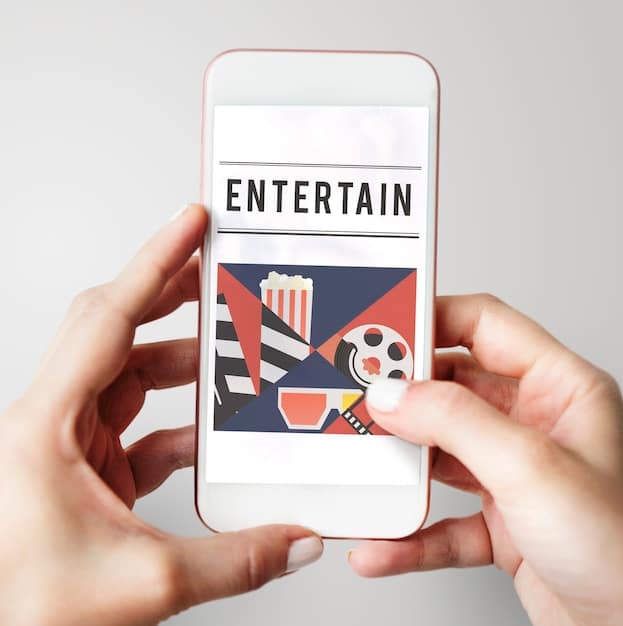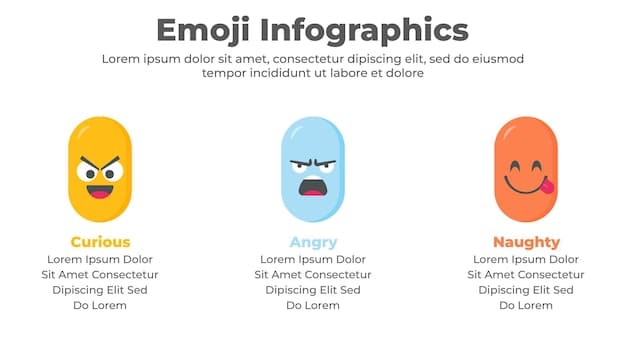The Psychology of Sharing: Unlocking Viral Content in the US

The psychology of sharing in the US reveals that content virality hinges on emotional resonance, social identity signaling, practical value, and the ability to trigger action or discussion; understanding these factors is key to crafting shareable material.
What makes content spread like wildfire across the US? The answer lies in understanding the intricate psychology behind sharing – the emotional triggers, social motivations, and inherent value propositions that compel individuals to pass information along. Let’s delve into the psychology of sharing: what makes content go viral in the US?
Understanding the Core Motivations Behind Sharing
Sharing isn’t just about passing along information; it’s a complex behavior driven by a variety of motivations. Individuals share content to express themselves, connect with others, and contribute to conversations. Let’s break down some of the key reasons why people in the US share content online.
Emotional Resonance
Content that evokes strong emotions, whether positive or negative, is more likely to be shared. This could include feelings like joy, awe, anger, or sadness. Why is emotion so powerful in driving shares?
Emotional content often triggers a visceral response, making people feel compelled to react and share their feelings with others. When something resonates deeply, individuals want to spread that feeling or experience to their network.
Social Identity and Belonging
Sharing can be a way for individuals to express their identity and align themselves with certain groups or values. By sharing content that reflects their beliefs and interests, people can signal who they are to their social network.
- Self-Expression: Sharing content that reflects personal values, interests, and beliefs.
- Group Affiliation: Aligning with specific communities or groups through shared content.
- Social Signaling: Communicating one’s identity to their network.

Ultimately, the decision to share is often driven by a combination of these motivations. Understanding the underlying psychology of sharing can help content creators craft material that is more likely to resonate with audiences and spread organically.
The Role of Practical Value and Information
Practical value is a significant driver of content sharing. People often share information that they believe will be useful or helpful to their friends, family, or colleagues. Content that solves a problem, offers advice, or provides valuable insights is more likely to be passed along.
Utility and Problem-Solving
Content that offers practical solutions to everyday problems is highly shareable. This could include how-to guides, tips and tricks, or advice on personal finance, health, or relationships.
There’s an inherent satisfaction in helping others, and sharing valuable information is a simple way to do so. People often share content that they believe will make someone’s life easier or more enjoyable.
Informative and Insightful Content
Sharing can also be driven by a desire to educate or inform others. Content that provides unique insights, data-driven analysis, or expert opinions is often shared to spread awareness and spark conversation.
- Curated Content: Sharing articles, videos, or infographics that provide valuable information.
- Expert Opinions: Sharing content from trusted sources or thought leaders.
- Data-Driven Insights: Sharing content that presents data in a clear and compelling way.
Ultimately, content that provides value, whether through utility or information, is more likely to be shared. People want to share content that will benefit their network and position them as a helpful and knowledgeable resource.
The Impact of Social Currency and Perceived Value
Social currency refers to the idea that sharing content can enhance one’s social standing or reputation. People often share content that they believe will make them look good, intelligent, or well-informed to their peers. Understanding how content impacts perceived value is key to understanding virality.
Looking Good and Appearing Smart
Sharing content can be a way to curate one’s online persona and project a desired image. People often share content that aligns with their values, interests, and aspirations, signaling who they are to their network.
Content that is perceived as sophisticated, intelligent, or insightful can enhance one’s social capital. By sharing this type of content, individuals can position themselves as thought leaders or experts in their field.
Driving Conversation and Engagement
Content that sparks discussion and debate is more likely to be shared. People often share content that they believe will generate interesting conversations and engagement within their network.
Sharing thought-provoking content can be a way to initiate dialogue and connect with others who share similar interests or perspectives. This type of sharing can foster a sense of community and belonging.

In summary, social currency plays a crucial role in driving content sharing. People are motivated to share content that enhances their social standing, drives conversation, and provides value to their network. Content creators who understand these motivations can craft material that is more likely to resonate with audiences and spread organically.
The Influence of Network Structure and Social Connections
The structure of social networks and the strength of social connections play a crucial role in determining whether content goes viral. Content is more likely to spread quickly and widely when it is shared across diverse and interconnected networks.
Strong Ties vs. Weak Ties
Strong ties refer to close relationships, such as family and close friends, while weak ties refer to acquaintances and more distant connections. Both types of ties play a role in content sharing.
Strong ties are more likely to share content that is personally relevant or emotionally resonant, while weak ties are more likely to expose individuals to new information and perspectives. A mix of strong and weak ties is essential for content to reach a wider audience.
The Role of Influencers and Opinion Leaders
Influencers and opinion leaders can play a significant role in amplifying content and driving virality. These individuals have a large and engaged following, and their recommendations carry weight.
- Identifying Influencers: Recognizing key individuals who can amplify your message.
- Building Relationships: Cultivating relationships with influencers in your niche.
- Engaging Audiences: Creating content that resonates with influencers and their followers.
Understanding the dynamics of network structure and social connections is essential for maximizing content reach and driving virality. By targeting diverse networks, leveraging influencers, and fostering engagement, content creators can increase the likelihood that their material will spread organically.
The Power of Storytelling and Narrative
Storytelling is a powerful tool for engaging audiences and driving content sharing. Stories have the ability to capture attention, evoke emotions, and create a lasting impact. Content that is presented in a compelling narrative format is more likely to be shared.
Creating Emotional Connections
Stories provide a framework for understanding and relating to information. By crafting narratives that resonate with audiences on an emotional level, content creators can increase the likelihood that their material will be shared.
Emotional stories can trigger a range of feelings, from joy and inspiration to sadness and anger. When people feel emotionally connected to a story, they are more likely to share it with others.
Building Relevance and Memorability
Stories can make complex information more accessible and memorable. By presenting information in a narrative format, content creators can help audiences retain and recall key details.
Stories also have the ability to make content more relatable and relevant. By incorporating real-life examples, anecdotes, and personal experiences, content creators can connect with audiences on a deeper level.
In summary, storytelling is a powerful tool for driving content sharing. By crafting compelling narratives that evoke emotions, build relevance, and make information more memorable, content creators can increase the likelihood that their material will spread organically.
Practical Strategies for Creating Shareable Content
Understanding the psychology of sharing is essential for creating content that has the potential to go viral. By incorporating the principles of emotional resonance, social currency, and practical value, content creators can craft material that is more likely to resonate with audiences and spread organically.
Emphasize Emotional Triggers
Content that evokes strong emotions is more likely to be shared. Consider incorporating elements that trigger feelings like joy, awe, anger, or sadness.
For example, a video that showcases acts of kindness and compassion is likely to evoke feelings of joy and inspiration, making it highly shareable.
Provide Social Currency
Content that makes people look good, intelligent, or well-informed is more likely to be shared. Consider incorporating elements that enhance social standing and drive conversation.
- Insightful Analysis: Share content that provides unique perspectives or data-driven analysis.
- Thought Leadership: Showcase expert opinions or insights from thought leaders.
- Entertaining Content: Create content that is funny, entertaining, or visually appealing.
Offer Practical Value
Content that solves a problem, offers advice, or provides valuable insights is more likely to be shared. Consider incorporating elements that provide utility and information.
Ultimately, creating shareable content requires a deep understanding of the psychology of sharing. By incorporating the principles of emotional resonance, social currency, and practical value, content creators can craft material that is more likely to resonate with audiences and spread organically across the US.
| Key Element | Brief Description |
|---|---|
| 😊 Emotional Resonance | Content evokes strong feelings (joy, awe, etc.), compelling sharing. |
| 👍 Social Currency | Sharing enhances social standing, making sharers look good. |
| 💡 Practical Value | Offers utility, advice, or solves problems for the audience. |
| 🌐 Network Structure | Content spreads wider through diverse and interconnected networks. |
Frequently Asked Questions (FAQ)
▼
Content that evokes strong emotions, such as joy, sadness, or anger, often prompts sharing. The more deeply people feel, the more likely they are to want to share that emotional experience with others.
▼
Social currency is enhanced when sharing content that makes individuals appear knowledgeable, insightful, or helpful to their network, thus improving their social standing and reputation.
▼
Storytelling captures attention, evokes emotions, and creates lasting impact, making content more engaging and memorable. Narratives help people connect with and remember content better.
▼
Influencers amplify content due to their large and engaged following. Their endorsements and shares can significantly expand the reach and visibility of viral content to broader audiences.
▼
Practical value drives sharing by providing solutions, offering useful tips, or supplying informative content that solves problems for others, making it more likely to be shared.
Conclusion
Understanding the psychology of sharing: what makes content go viral in the US involves recognizing the interplay of emotions, social dynamics, and inherent value. By crafting content with these elements in mind, creators can significantly boost their chances of creating something that resonates deeply and spreads widely across digital networks.





